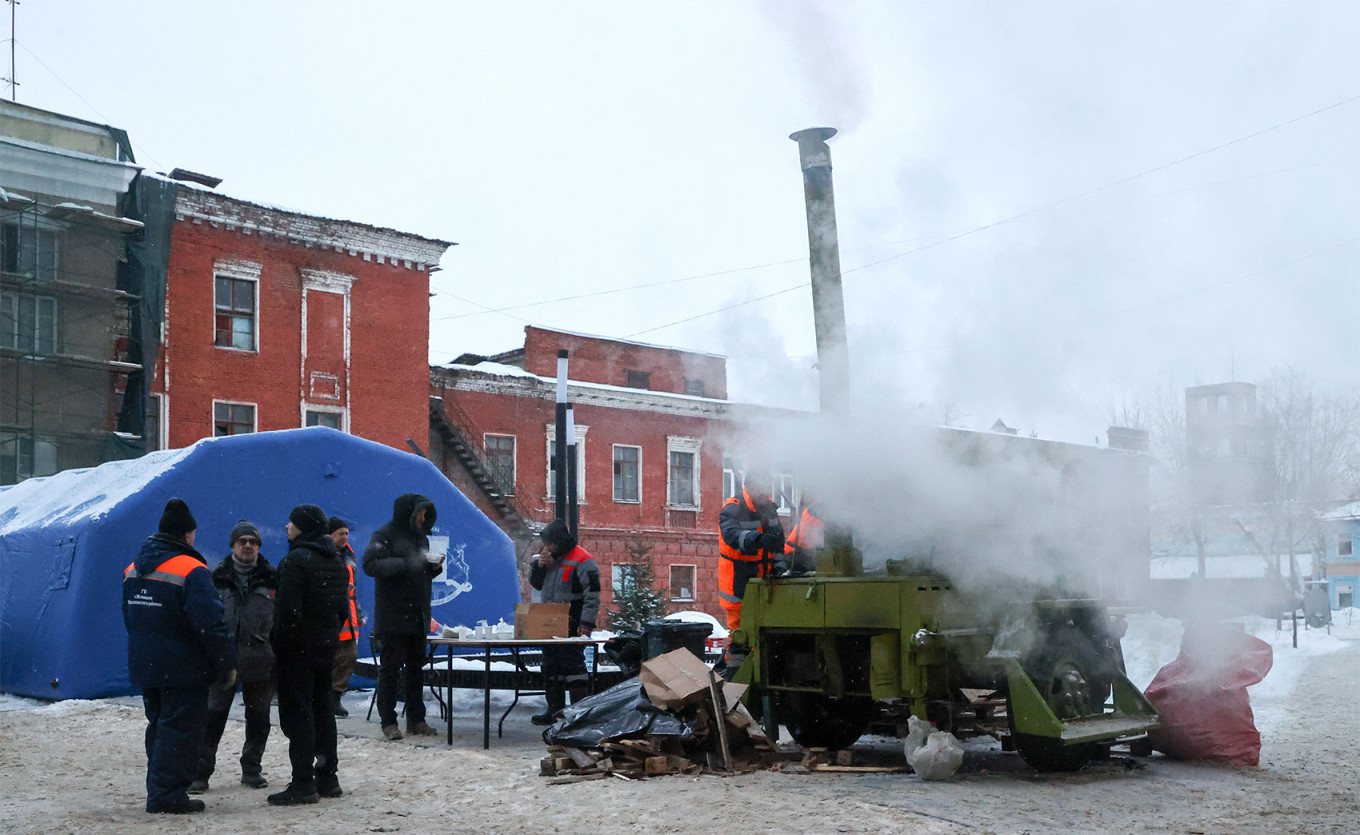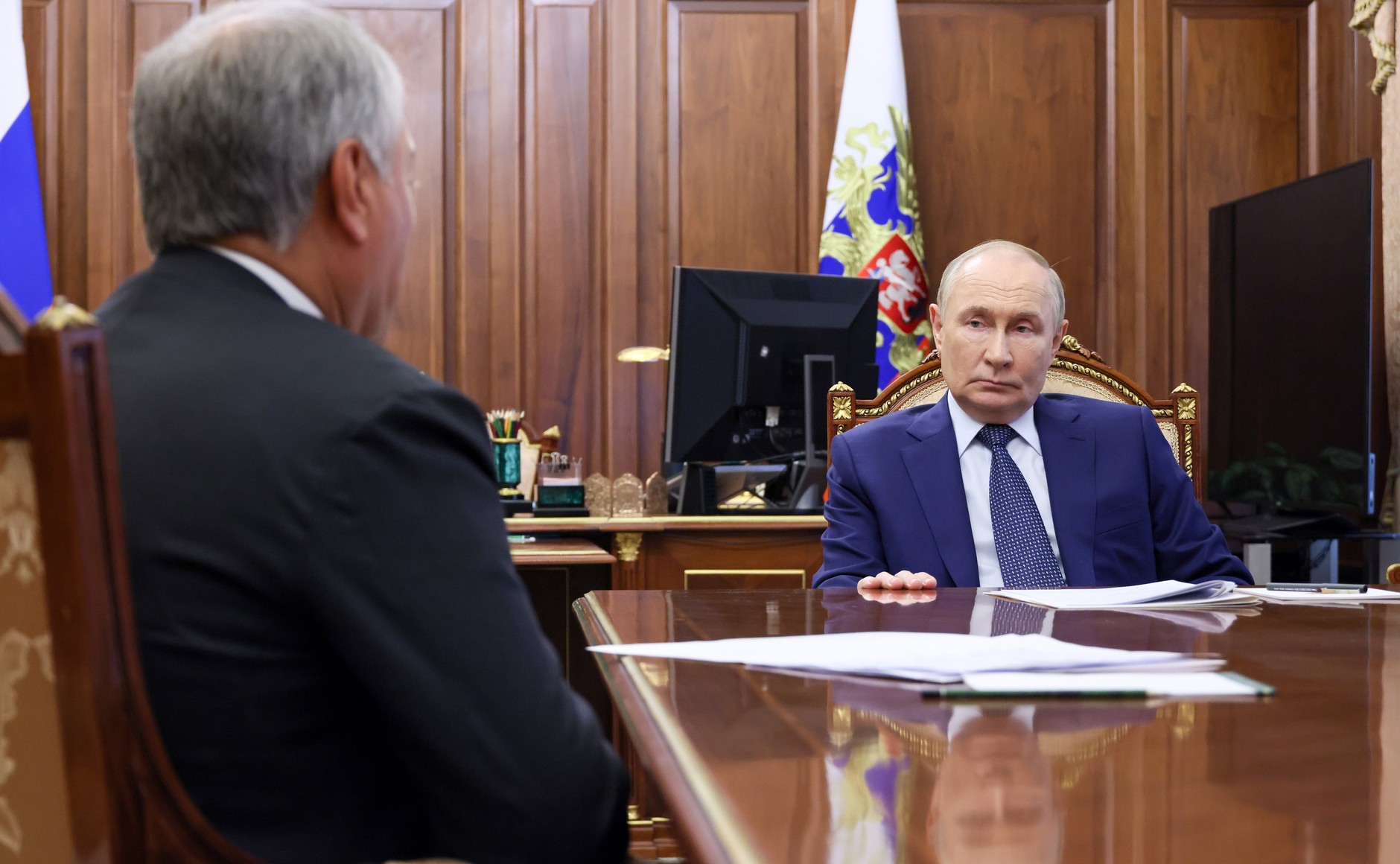
Russia’s Deteriorating Infrastructure on Verge of Collapse, Threatening Tough Winter Ahead
Russia’s Deteriorating Infrastructure on Verge of Collapse, Threatening Tough Winter Ahead
Executive Summary:
- Russian officials have begun to address the degrading state of critical civilian infrastructure, particularly heating systems, ahead of the coming winter. The past few years have seen catastrophic incidents leaving many Russians without heat.
- Russian officials blame numerous sources for these issues—including Russian citizens themselves—while the Kremlin’s preferred narrative is that the solution to infrastructural degradation is nationalization.
- Public discontent caused by worsening living standards and mounting socio-economic challenges could prove to be far more damaging to the Russian regime than military losses in Ukraine, as these issues more directly affect the lives of everyday Russians.
Anatoly Seryshev, a Russian presidential plenipotentiary envoy in the Siberian federal district, recently held a meeting dedicated to the Siberian regions’ preparedness for the coming winter and the state of critical civilian infrastructure. In his speech, Seryshev highlighted that Russian President Vladimir Putin considers the matter important enough to be personally overseeing efforts to appease the worries of those Siberian residents significantly affected by Russia’s failing infrastructure (Tvtomsk.ru, September 24). It would be catastrophic if infrastructural failures similar to those that occurred in the Urals and Siberia last winter were seen again, putting the wider collapse of Russian infrastructure on full display (NGS.ru, January 12). Given past occurrences and structural problems in this industry, however, new incidents are likely to occur in the coming months. Russia’s crumbling infrastructure, especially the increasingly failing heating plants, demonstrates the degradation of Russian society as the Kremlin focuses its attention beyond Russia’s borders and away from its suffering people.
Major incidents with civilian infrastructure are hardly news in Russia, where such episodes are commonplace every year (Fedpress.ru, November 29, 2022). Last winter was particularly disastrous, however, across the entirety of Russia, including temporarily occupied Crimea and Sevastopol. At least 577 major incidents affecting critical infrastructure were recorded in 59 regions. The most affected regions were Sverdlovsk oblast (42 incidents) and the city of Yekaterinburg, where, amid drastic temperature drops, 324 multi-level apartment buildings remained without heating for several days. Other regions affected by incidents were Volgograd (39), Moscow (31), and Novosibirsk (30) oblasts. Russia-based reporters detailed how approximately 3 million Russians lost central heating last winter (Sibreal.org, February 12).
According to Sergey Sokhranov from the Smolensk-based “Kontrol” housing and communal service, Russia experiences approximately 7,000 incidents related to its heating networks annually, primarily due to the attrition of infrastructure. In St. Petersburg, Russia’s second-largest city and the cultural capital, the level of attrition in infrastructure has reached a staggering 65–70 percent, and only in Moscow—which enjoys a huge influx of money and steady logistical support—is the situation somewhat better (Mskgazeta.ru, January 5). Notably, the above-mentioned incidents resulted in a wave of public discontent, with many Siberia- and Ural-based residents blaming local officials and appealing to Putin, asking, “Why is it not Europe, but us who are freezing to death?” (Sibreal.org, December 17, 2023).
Russian officials have provided varied responses to the decline of Russia’s infrastructure. In 2023, some officials blamed local residents for the incidents, arguing that local populations in the most affected regions should have been more proactive in addressing communal and housing issues well before the cold struck (RG.ru, January 17, 2023). Andrey Gurulyov, a Russian politician and former army officer, argued that the solution to this problem should be to drastically increase the price of utilities. He admitted, however, that this measure would not be popular and thus “should not be introduced right now [given the war].” He believed that the income generated from the price increases would be used to update and maintain infrastructure, and that this was the only viable way to avoid future outages and degradation (T.me/agurulev, January 16).
The Kremlin decided to promote what they suspected to be the most convenient argument for Russian citizens. They scapegoated the “unscrupulous private sector” in charge of some sectors of Russia’s critical infrastructure. For instance, following several incidents, Putin ordered the nationalization of a private heating plant in the Moscow oblast, where failures recently left 150,000 residents without heat (Riamo.ru, January 9; Radio Free Europe/Radio Liberty, January 12). Similarly, Vyacheslav Volodin, the chairman of the Russian State Duma, also spoke in favor of further nationalizing infrastructure (Realty.ria.ru, December 16). Russian sources and journalists, however, are less optimistic. Based on their investigations, they find that the main problem is not an increased presence of the private sector in this industry, but quite the opposite. Instead, growing state control is resulting in the communal and public housing system becoming much more cumbersome, ineffective, and prone to corruption and red tape (Novayagazeta.eu, February 12).
Observing current trends, the upcoming winter may also pose challenges to Russia’s critical infrastructure. In addition to the attrition of infrastructure and the lack of funding for ensuring these heating plants continue to operate throughout the winter, growing electricity consumption in Siberia could pose a new threat to the sustainability of local power grids. Electricity consumption is expected to rise in Irkutsk oblast and Krasnoyarsk krai in the next year by at least 4.1 percent, mainly due to the growing power demands of mining communities. Over the past eight months, electricity consumption increased by 59.5 percent compared to the same period in 2023 (Ogirk.ru, September 4). While Russian officials are warning that the likelihood of new incidents of a similar nature is high across all of Russia, specific attention has been paid to the Novosibirsk oblast. There, the local governor reported that the level of attrition of local infrastructure is close to 72 percent (Fedpress.ru, May 13).
Local officials and respective agencies are assuring the public that they “have done their homework” and will try to prevent situations seen during the previous winter from occurring. At the same time, these actors cautiously state that it is difficult to predict how temperatures will change during the winter (Fedpress.ru, September 19). Notably, Siberian officials are already claiming that due to a severe lack of funding and other problems, Siberia will face a significant deficit of electricity in 2029 (Sia.ru, September 11). Currently, communal services are diligently working to solve these issues, especially in Novosibirsk, where preparations for the coming winter began in May (Fedpress.ru, September 19). Local authorities are training for potential emergencies related to the collapse of the local heating system based on what occurred last winter (Atas.info, September 5). Despite these efforts, Siberia’s heating infrastructure has already started to show signs of strain. Issues are already being seen, as in October, 200 residents of Novosibirsk have complained about the heating in their apartments with 84 households remaining without electricity (Gorsite.ru, October 10). Public discontent caused by worsening living standards and mounting socio-economic challenges in Russia damage Russia’s incumbent regime far more than the military losses in Ukraine since 2022, more directly affect the lives of everyday Russians (see EDM, August 20).


